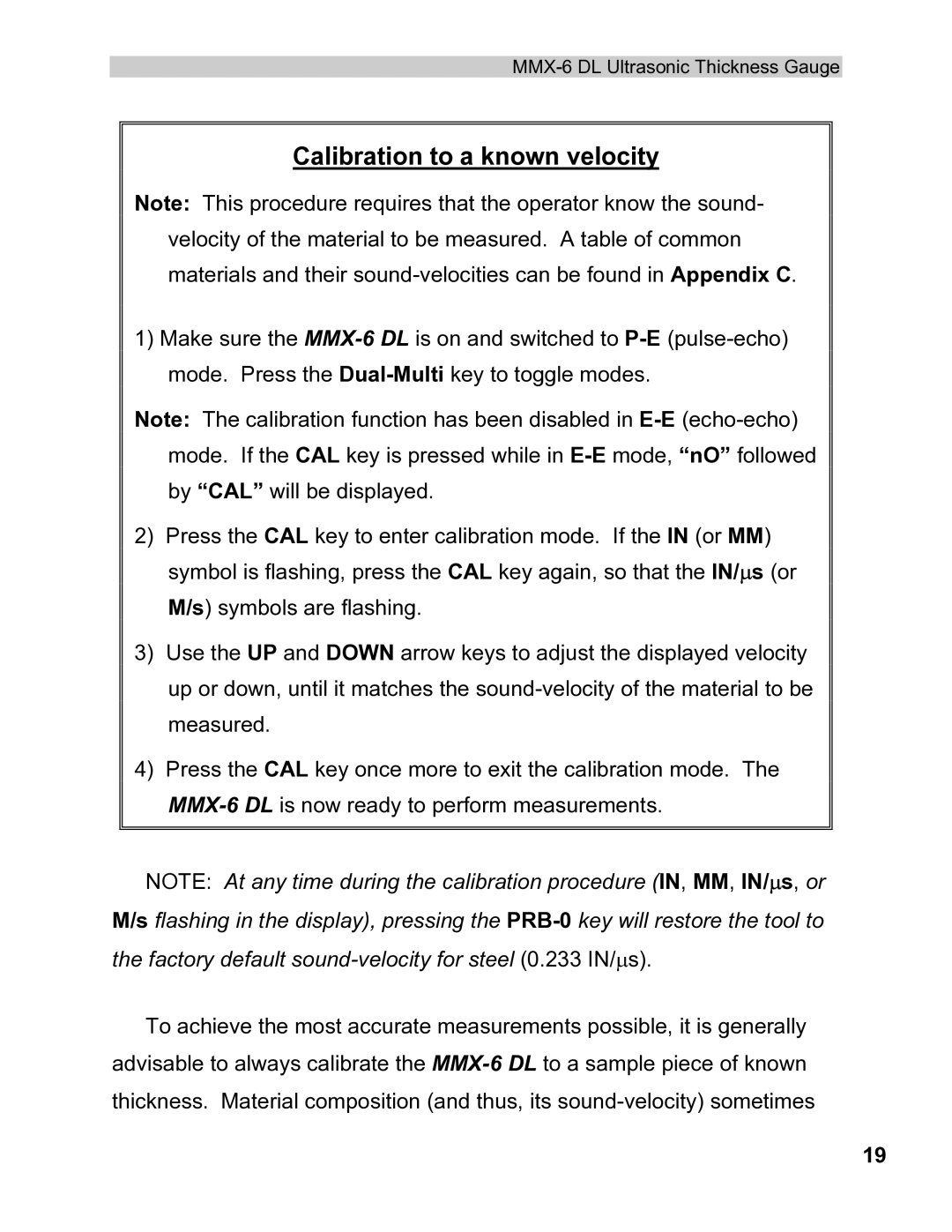
MMX-6 DL Ultrasonic Thickness Gauge
Calibration to a known velocity
Note: This procedure requires that the operator know the sound- velocity of the material to be measured. A table of common materials and their
1)Make sure the
Note: The calibration function has been disabled in
2)Press the CAL key to enter calibration mode. If the IN (or MM) symbol is flashing, press the CAL key again, so that the IN/µs (or M/s) symbols are flashing.
3)Use the UP and DOWN arrow keys to adjust the displayed velocity up or down, until it matches the
4)Press the CAL key once more to exit the calibration mode. The
NOTE: At any time during the calibration procedure (IN, MM, IN/µs, or M/s flashing in the display), pressing the
To achieve the most accurate measurements possible, it is generally advisable to always calibrate the
19
